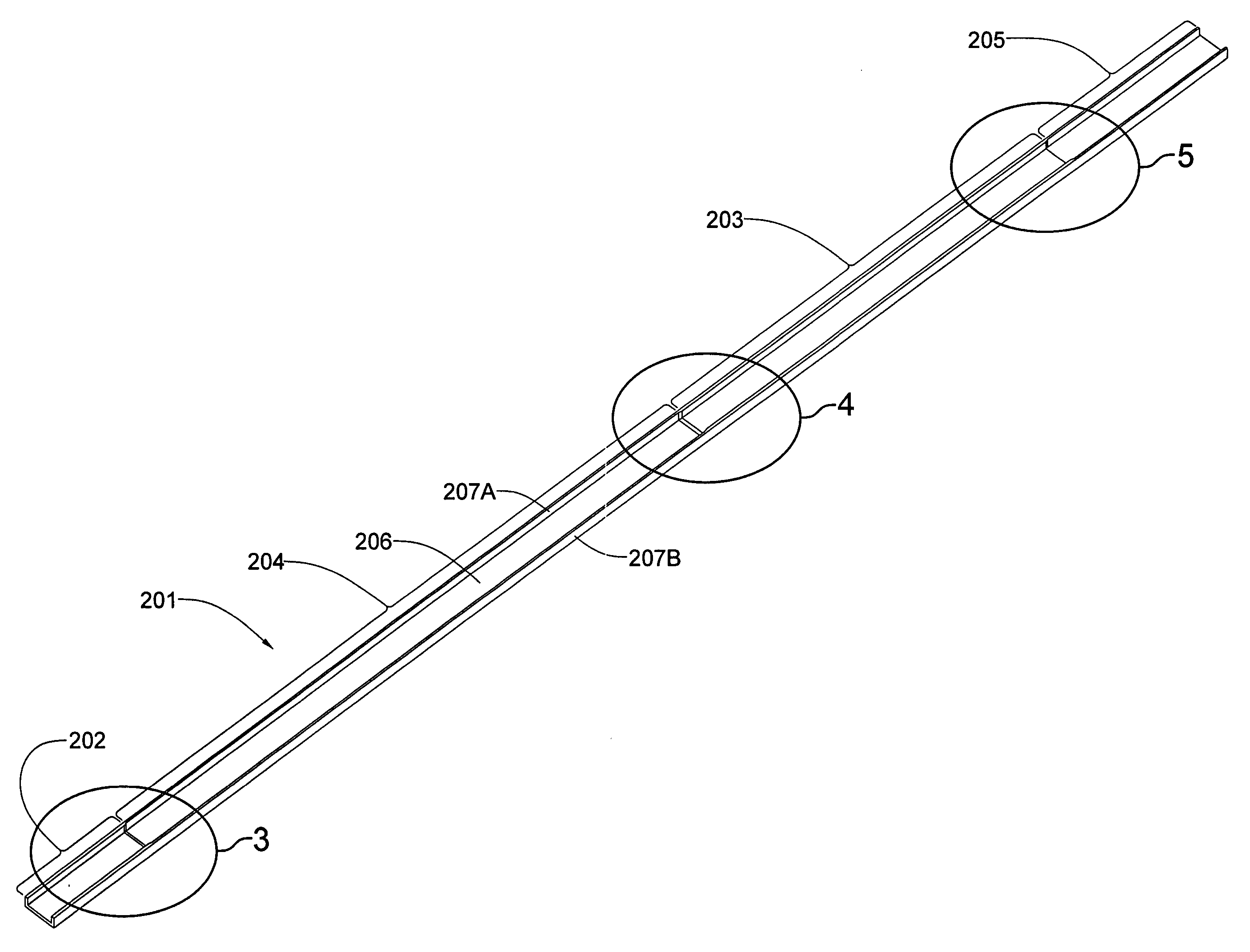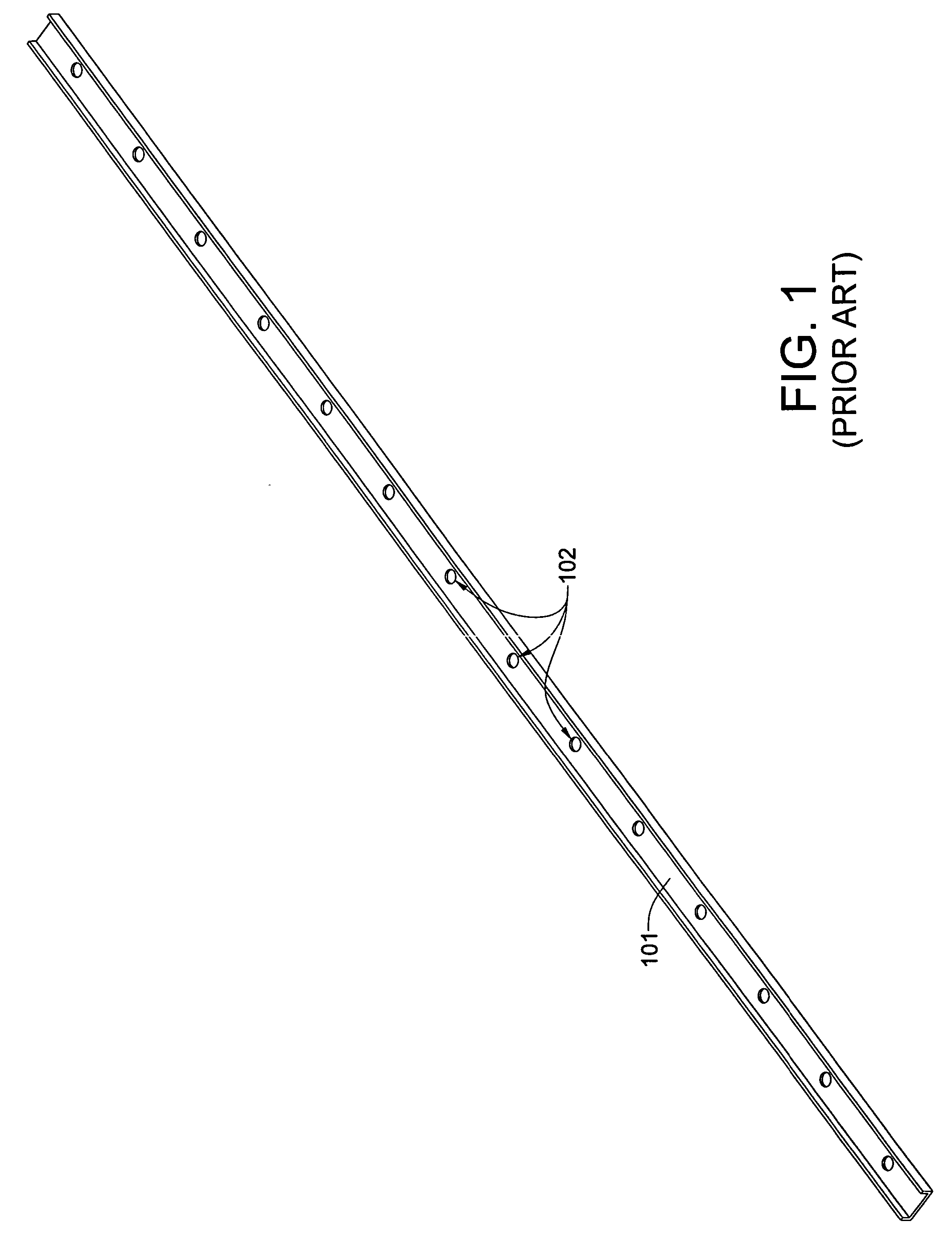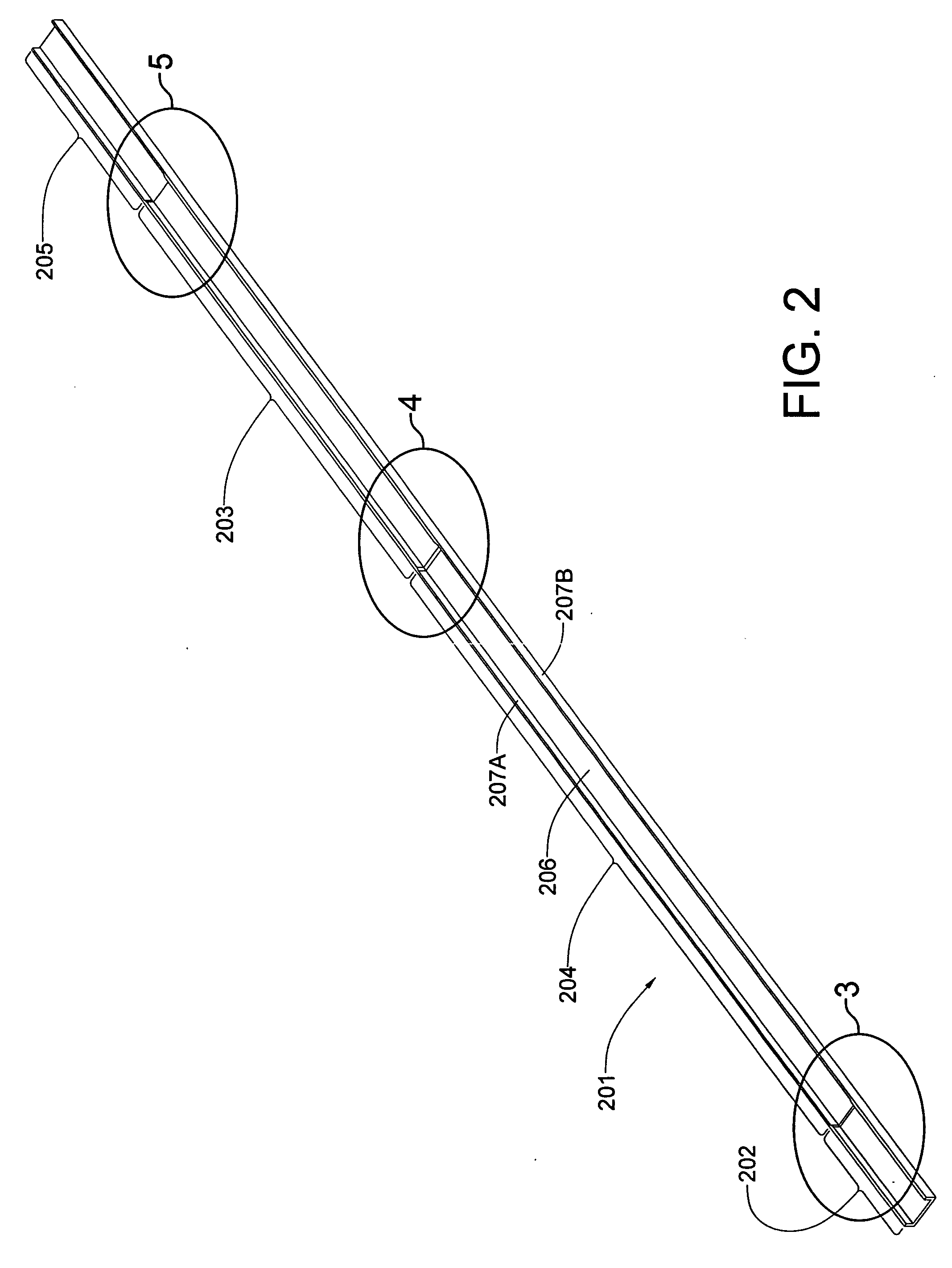Lightweight composite ladder rail having supplemental reinforcement in regions subject to greater structural stress
a composite ladder rail and region technology, applied in the field of ladder rails, can solve the problems of high cost, two-part precision closed mold, and low commercial success of rtm process, and achieve the effect of greater cross-sectional area
- Summary
- Abstract
- Description
- Claims
- Application Information
AI Technical Summary
Benefits of technology
Problems solved by technology
Method used
Image
Examples
Embodiment Construction
[0035] Exemplary ladder rails and the processes which may be used to manufacture the ladder rails will now be described in detail, with the reference to the attached drawing FIGS. 2 through 20. It is to be understood that the drawing figures are not necessarily drawn to scale, and that they are merely illustrative of the apparatus and processes. The main theme of the present invention is that a composite ladder rail may be supplementally reinforced in strategic locations for a variety of applications in one or more longitudinal regions by increasing the number of structural fibers in those regions, with a corresponding increase in the thickness of the rail and its cross-sectional area in the structurally-reinforced region. The technique of supplemental reinforcement in strategic locations can be applied to ladder rails used for a variety of applications, including, but not limited to, use in self-supporting step ladders, non-self-supporting extension ladders, and combination ladders...
PUM
| Property | Measurement | Unit |
|---|---|---|
| Weight | aaaaa | aaaaa |
| Length | aaaaa | aaaaa |
| Force | aaaaa | aaaaa |
Abstract
Description
Claims
Application Information
 Login to View More
Login to View More - R&D
- Intellectual Property
- Life Sciences
- Materials
- Tech Scout
- Unparalleled Data Quality
- Higher Quality Content
- 60% Fewer Hallucinations
Browse by: Latest US Patents, China's latest patents, Technical Efficacy Thesaurus, Application Domain, Technology Topic, Popular Technical Reports.
© 2025 PatSnap. All rights reserved.Legal|Privacy policy|Modern Slavery Act Transparency Statement|Sitemap|About US| Contact US: help@patsnap.com



